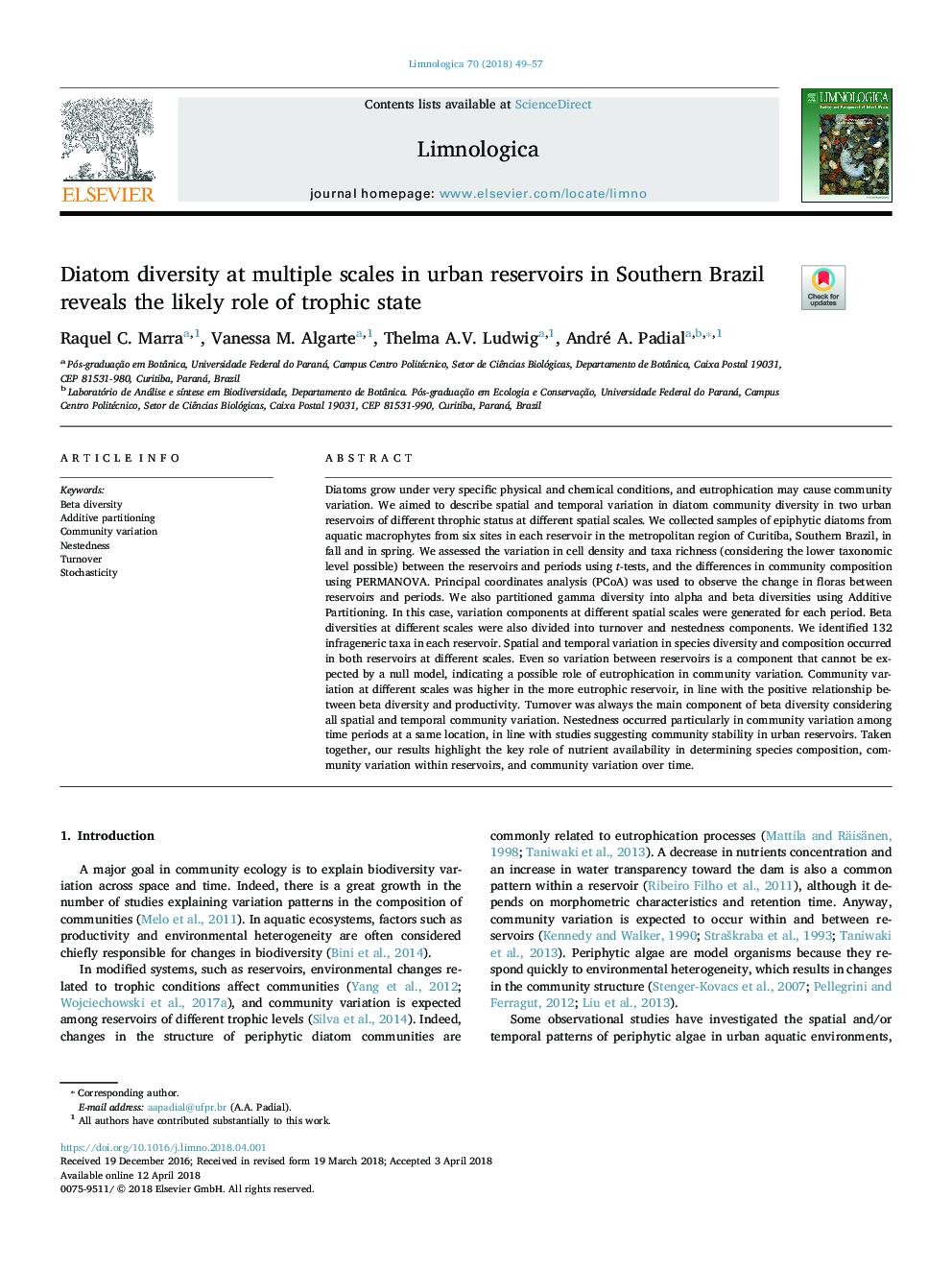| Article ID | Journal | Published Year | Pages | File Type |
|---|---|---|---|---|
| 8849377 | Limnologica - Ecology and Management of Inland Waters | 2018 | 9 Pages |
Abstract
Diatoms grow under very specific physical and chemical conditions, and eutrophication may cause community variation. We aimed to describe spatial and temporal variation in diatom community diversity in two urban reservoirs of different throphic status at different spatial scales. We collected samples of epiphytic diatoms from aquatic macrophytes from six sites in each reservoir in the metropolitan region of Curitiba, Southern Brazil, in fall and in spring. We assessed the variation in cell density and taxa richness (considering the lower taxonomic level possible) between the reservoirs and periods using t-tests, and the differences in community composition using PERMANOVA. Principal coordinates analysis (PCoA) was used to observe the change in floras between reservoirs and periods. We also partitioned gamma diversity into alpha and beta diversities using Additive Partitioning. In this case, variation components at different spatial scales were generated for each period. Beta diversities at different scales were also divided into turnover and nestedness components. We identified 132 infrageneric taxa in each reservoir. Spatial and temporal variation in species diversity and composition occurred in both reservoirs at different scales. Even so variation between reservoirs is a component that cannot be expected by a null model, indicating a possible role of eutrophication in community variation. Community variation at different scales was higher in the more eutrophic reservoir, in line with the positive relationship between beta diversity and productivity. Turnover was always the main component of beta diversity considering all spatial and temporal community variation. Nestedness occurred particularly in community variation among time periods at a same location, in line with studies suggesting community stability in urban reservoirs. Taken together, our results highlight the key role of nutrient availability in determining species composition, community variation within reservoirs, and community variation over time.
Related Topics
Life Sciences
Agricultural and Biological Sciences
Aquatic Science
Authors
Raquel C. Marra, Vanessa M. Algarte, Thelma A.V. Ludwig, André A. Padial,
